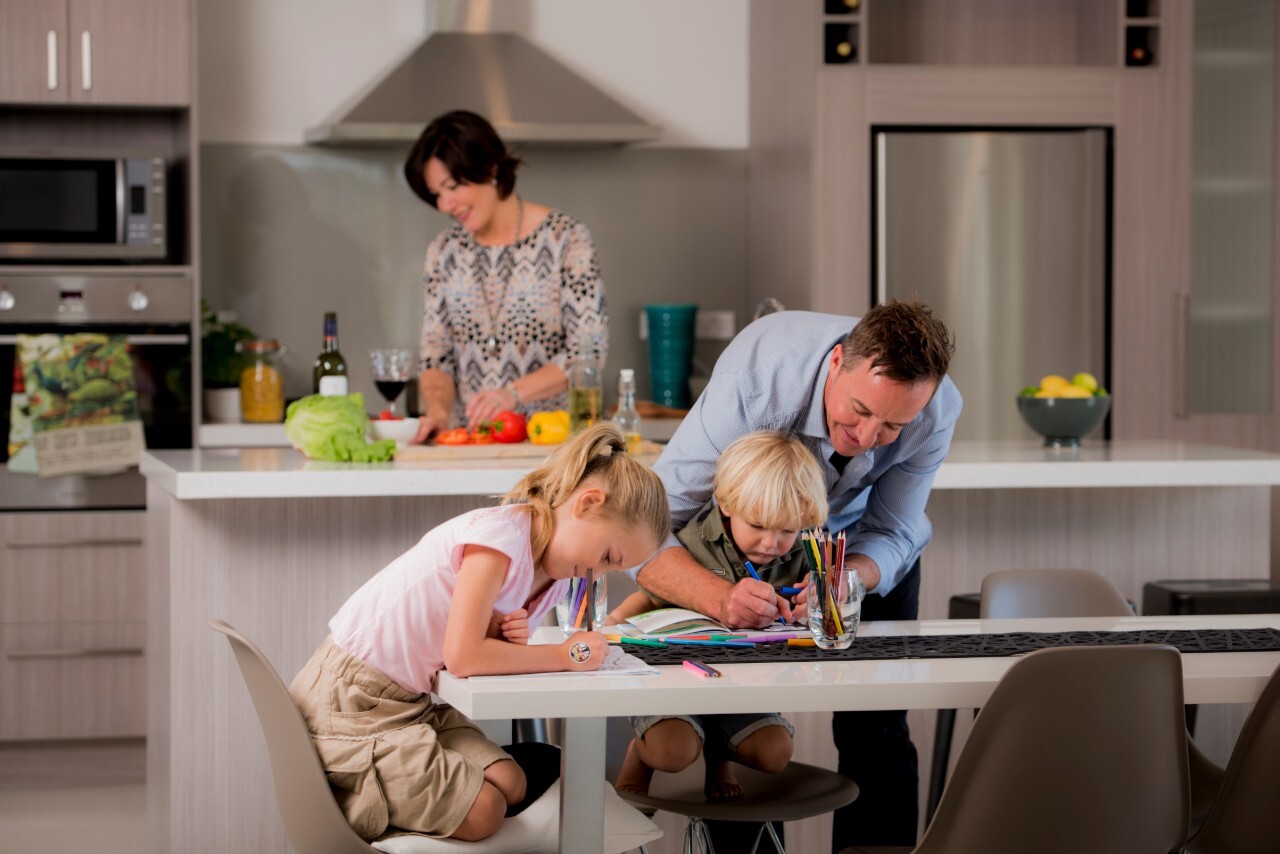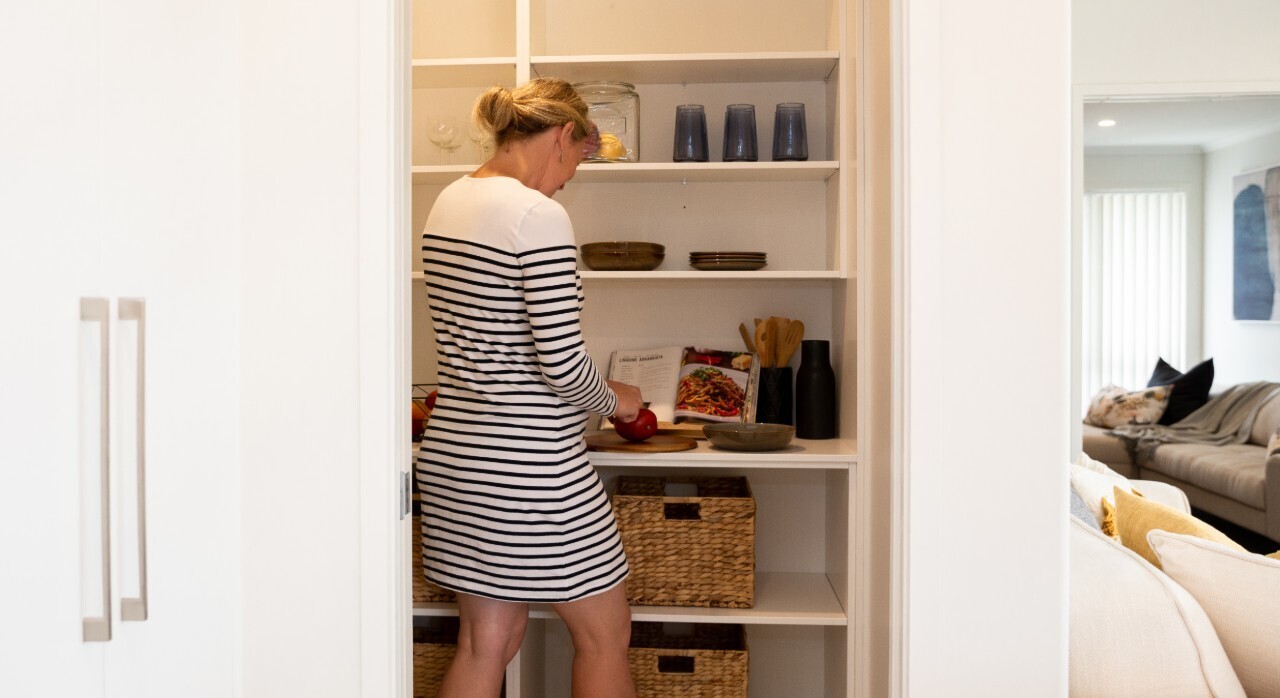
We’re spending more time in our homes than ever before. The rooms that we used to spend only a few hours a day in, have become our safe havens – and the best way for us to beat Covid-19.
The essence of home, and what that means for you and your family, has never been more important. How we design and plan for the future should reflect our new reality, and the spaces we call home should too.
As our bedrooms turn into home offices and our living rooms become workout spaces, it’s more important than ever for our design to be versatile, and for spaces to be multifunctional.
For many, working from home is no longer a choice. When it comes to design that could mean incorporating small study nooks into your plans, or considering how spaces can be closed off for privacy.
For those whose normal day involves regular team meetings or board meetings – now delving into the sometimes challenging world of video conference calls – more attention to soundproofing and technological capability may be needed when designing your home.
Spatial organisation is also becoming more important, with everyone staying indoors it’s easy for our homes to become filled with the clutter from activities.
When we’re working from home, building in good storage and segmenting our work and home zones can often be key to increasing productivity.
For the family that’s juggling homeschooling, creating areas for your youngster’s education is another challenge. Having a dedicated space for kids to learn, draw and read will help take the hassle out of doing schoolwork.
Don’t be afraid to make study spaces fun with colour and design flair; for the creative kid you even could turn a wall into a blackboard with magnetic write-on paint.
Create comfortable spaces with different zones by adding a window seat or cosy couch so they have a dedicated spot to sit down with a book.

The iso-reality
Isolation is a term that’s become all too familiar. With the unpredictability of Covid-19, and the likelihood it won’t be our last pandemic, our homes need to be able to support our needs during these difficult times.
It could be that a member of your family needs to isolate from the rest of your bubble. When designing, we need to consider how that might work and how we can incorporate isolation spaces into the design.
While open-plan living is arguably the most common residential design favourite, the ability to separate these spaces when needed builds more resilience into your home.
Allowing for flexibility will be crucial. That could include creating different breakaway spaces where rooms can be split with sliding doors.
We will likely also see more emphasis on healthier homes, from air quality filtration systems, to germ-resistant and antimicrobial surfaces.
Self-sufficient design
In some ways, we may see design reflecting a return to a simpler, more self-sufficient way of living. The term essential has been heard time and time again over the past few months, and when designing our future homes we should be considering what is essential for us, and how we want to live.
Home vegetable gardens and urban farming are increasing in popularity as many of us find solace in plants, and perhaps, discover our green-thumb once again.
It’s proven that physical interaction with plants is good for our mental health. Collecting thyme from the herb garden, picking lemons from the fruit trees and digging up potatoes for tonight’s dinner – all from the comfort of your own edible garden.
Finding the space in an urban environment to sow those seeds can be difficult. Homeowners can use the walls, paving, planter-boxes, containers, pergolas and even water features to support a thriving home garden. You’ll also need to consider smarter food storage and bigger pantries to support all that delicious home cooking.
Spending more time at home means those pesky power bills are likely to increase, which could see people become more thoughtful about conserving energy.
Whether that includes using higher-tech insulation, solar panels or energy storage systems – it will be essential to incorporate your choices at the beginning of the design phase.

Finding your Zen
While our homes are normally the zen spaces we come back to after a long day at work, now that we’re spending more time in them, it’s vital that we make our homes our sanctuaries. From peaceful spaces incorporating natural light, to areas for meditation and mindfulness, and even dedicated sunrooms to soak up that important vitamin D.
Calming colour combinations and carefully considered soft furnishings in separate nooks can also help create an escape from the rest of the home.
Marrying your interiors to outdoor landscapes, particularly for those living in cities with a lack of outdoor space, will help connect you with the natural environment. For those living in multi-level homes, it might also be adding terraces, rooftops or balconies.
Innovations in design technology have allowed home builders to construct larger doors and windows, creating the all-important indoor-outdoor flow.
Large bi-fold or sliding doors help provide a seamless transition to your backyard area, and perhaps, also allow for some much needed connection with the neighbours – while still allowing for the all-important social distancing.
Pets need Zen too
Other members of the family who need some design attention are your furry friends. Although our beloved pets will love having their human companions home more often, when things eventually go back to normal and we return to work, pets will likely struggle with separation anxiety.
This is particularly relevant for dogs, who often take their frustrations out on those beautiful couch cushions you’ve carefully chosen.
One way to avoid this problem could be creating spaces in your home where animals can be by themselves away from you and your family.
Create a zone just for them where they’ll be separated from you for several hours a day. This will encourage your beloved pets to play independently and find their own Zen – also saving those beautiful couch cushions.

To find out how Generation Homes can help you incorporate these design ideas into your new home, speak to one of our Sales Consultants today.